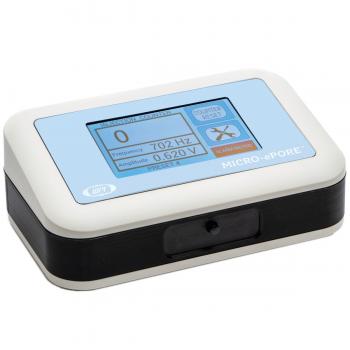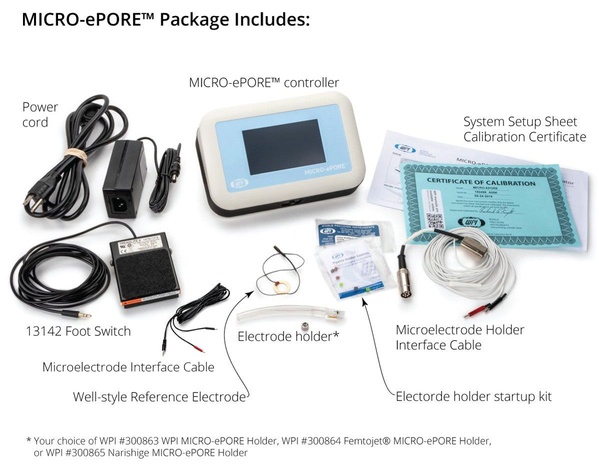/ Catalog / Cell Biology / MICRO-ePORE™
WPI MICRO-ePORE™ Pinpoint Cell Penetrator
WPI MICRO-ePORE™ Pinpoint Cell Penetrator is intended for targeted cell microinjection and increased embryo viability.
- Overview
- Specifications
- Links
Key Features
- Glove-friendly touch panel with a resistive screen
- Controlling the injection manually with a touch device or a foot switch
- user experience that is simple
- Using a touch screen, the user can change the frequency and voltage
- Compact size
- Four customizable protocol options
- The total number of injections is indicated by an active probe injection counter with an adjustable aural continuity tone
- Uses less power than electroporation to pierce a particular region of the cell membrane
Benefits
- Increase the viability of the embryos that were injected
- Adaptable mechanism
- Connects to WPI's PV820 and PV830 as well as other well-liked microinjection devices, including the Eppendorf Femtojet® and Narishige injectors
- DNA, RNA, and other macromolecules can be microinjected, along with proteins
- Pre- and post-implantation in embryos of different species, including those of mice, rodents, monkeys, cows, hogs, zebrafish, etc.
- Easy to use foot switch control for hands-free usage of the cell injector
- Four preset protocols and user-adjustable voltage and frequency
- Saves valuable benchtop room with its small, portable design
- Utilizes all popular inverted microscopes
Target Applications
- Microinjection of cells, such as CRISPR-Cas9 reagents into the cytoplasm of two-cell stage embryos, into oocytes and pre-implantation stage mammalian embryos
- Pronuclear rodent zygote microinjection
- Gene silencing in zebrafish
Simple, Elegant Solution
The novel WPI MICRO-ePORE™ pinpoint cell penetrator is an easy-to-use, adaptable device that can be used to effectively inject a wide range of substances and biomolecules into oocytes and mammalian embryos that are in the pre-implantation stage. When working on the microinjection of transgenic animals or cell manipulation, patent-pending Flutter Electrode Technology aids in small, clean, exact membrane penetration without tearing or harming the membrane.

Pinpoint Cell Penetrator vs. Electroporation
In order to penetrate the cell membrane and deliver genetic material, electroporation employs a pulse of electricity in a medium to open pores in the cell membranes of cells in the electroporation cuvette.
For the purpose of cell microinjection, WPI's MICRO-ePORE™ Pinpoint Cell Penetrator has a number of benefits over conventional electroporation.
- A pathway into the cell membrane is opened by the pinpoint cell microinjector using a much lower voltage.
- With a broad stroke, electroporation creates numerous holes in the cell membrane. WPI's precise cell microinjector, in comparison, precisely pinpoints a region of the cell membrane at the time of cellular microinjection.
- When using pinpoint cell penetration as opposed to electroporation, embryo survivability is considerably higher.
You can also visit site of the manufacturer.



